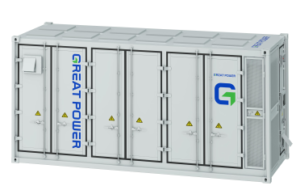Future Solar Technologies: Trends and Development Directions
•
What will solar panels look like in 2030? Emerging technologies promise to revolutionize how we capture sunlight, with breakthroughs in materials, AI integration, and energy storage.
The solar industry is evolving toward ultra-thin flexible panels, AI-optimized systems, and advanced storage solutions that will dramatically increase adoption rates and energy independence.
As global demand for clean energy surges, researchers and manufacturers are pushing the boundaries of solar technology. These innovations will redefine what's possible in renewable energy generation and management.
Next-Generation Solar Panels: Thin-Film and Organic Solar Panels
Why are bulky silicon panels still dominating when thinner, lighter alternatives exist? New photovoltaic materials are challenging traditional solar technologies with unique advantages.
Thin-film solar panels offer 90% lighter weight and flexible installation options, while organic photovoltaics enable semi-transparent solar windows - but both currently lag in efficiency (8-13%) compared to silicon.
The Thin Solar Revolution: Materials and Applications
-
Thin-Film Technologies
- Cadmium Telluride (CdTe): 10-12% efficiency, lowest cost per watt
- CIGS (Copper Indium Gallium Selenide): 12-14% efficiency, flexible
- Perovskite: 15-18% in labs, rapid efficiency improvements
-
Organic Photovoltaic Breakthroughs Characteristic OPV Advantage Current Limitation Flexibility Can bend to 30° radius Lower efficiency Transparency Up to 50% visible light Shorter lifespan Manufacturing Roll-to-roll printing Scalability challenges -
Emerging Applications
- Building-integrated photovoltaics (BIPV)
- Vehicle-integrated solar roofs
- Portable solar chargers for devices
"Thin-film technologies will capture 15% of the solar market by 2027, driven by their superior aesthetics and installation flexibility" - International Renewable Energy Agency
AI and Solar Energy: How Can Efficiency and Management Be Enhanced?
What if your solar system could predict weather patterns and optimize itself? Artificial intelligence is bringing smart capabilities to solar installations worldwide.
AI boosts solar output by 10-20% through predictive cleaning schedules, real-time performance optimization, and intelligent battery management - while reducing maintenance costs by 30%.
Smart Solar: AI Applications Transforming the Industry
-
Performance Optimization
- Cloud movement prediction
- Dynamic panel angle adjustment
- Shade pattern analysis
-
Maintenance and Monitoring AI Feature Benefit Implementation Fault detection Early issue identification Image recognition Cleaning alerts Optimal scheduling Weather + soiling data Anomaly detection Preventative maintenance Pattern analysis -
Grid Integration
- Demand forecasting
- Battery charge/discharge optimization
- Virtual power plant coordination
Best For: Large commercial installations and utilities where small efficiency gains translate to significant financial returns.
Progress and Future Prospects of Solar Energy Storage Technologies
How can solar power homes around the clock? Advances in energy storage are solving renewable energy's biggest limitation - intermittent generation.
Next-gen solar storage solutions include solid-state batteries (2x energy density), flow batteries (20,000+ cycles), and thermal storage - potentially reducing reliance on lithium by 50% by 2030.
The Storage Revolution: Comparing Emerging Technologies
-
Battery Technology Comparison Type Energy Density Cycle Life Cost Trend Lithium-ion 200-300 Wh/kg 5,000-7,000 Declining 8%/year Solid-state 400-500 Wh/kg 10,000+ High currently Flow Battery 20-70 Wh/kg 20,000+ Steady -
Alternative Storage Methods
- Thermal: Storing heat in molten salts
- Mechanical: Compressed air energy storage
- Hydrogen: Solar-to-fuel conversion
-
Integration Challenges
- Safety regulations for new chemistries
- Recycling infrastructure development
- Grid interconnection standards
Coming Soon: Hybrid systems combining short-duration lithium batteries with long-duration flow batteries for complete energy independence.
Conclusion
The solar industry's future lies in lightweight flexible panels, AI-driven smart systems, and revolutionary storage - together enabling a truly 24/7 renewable energy ecosystem.






